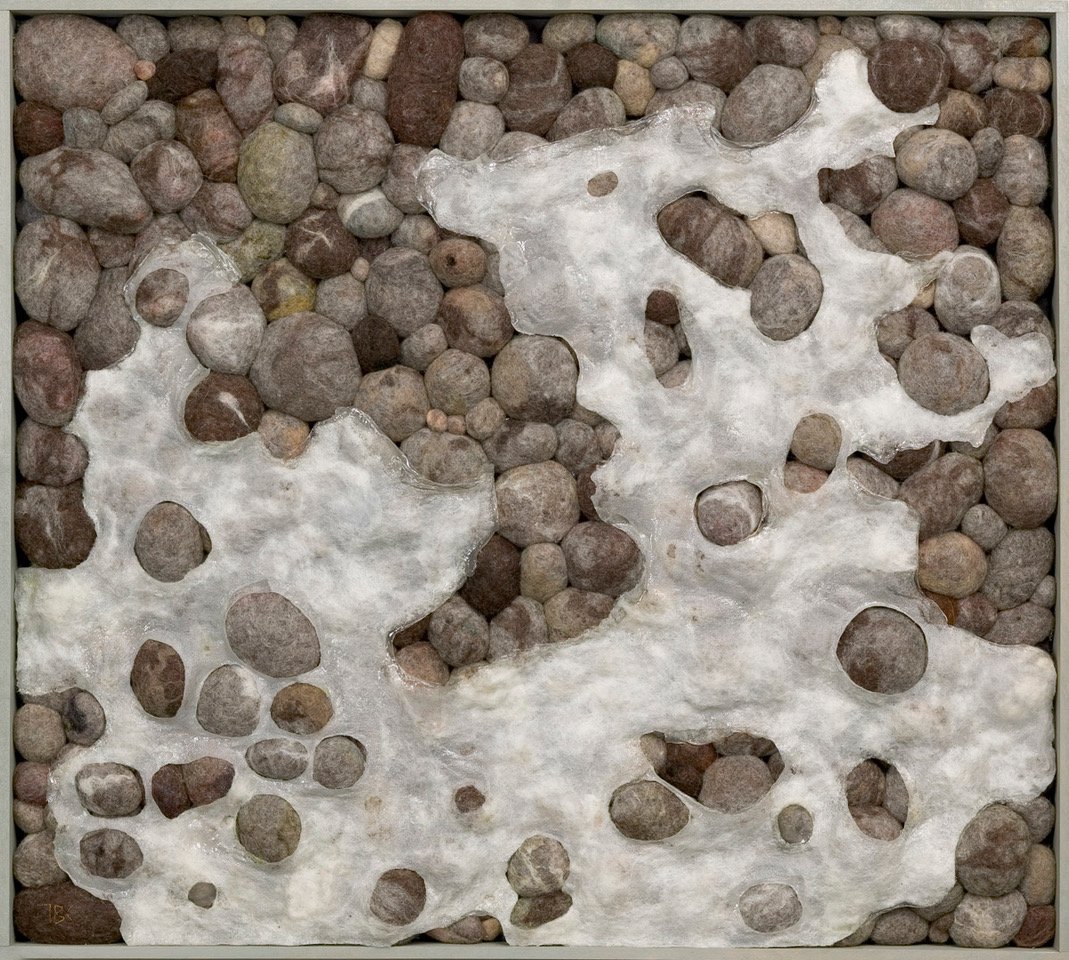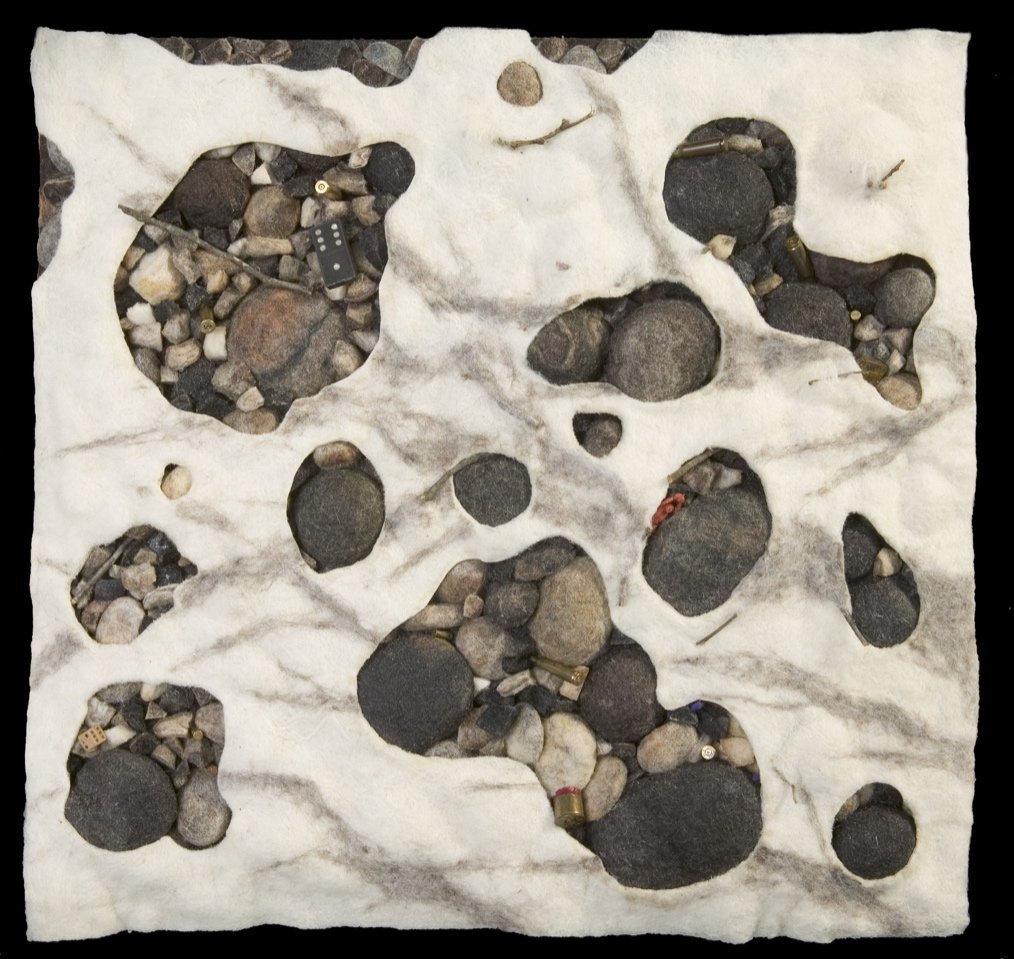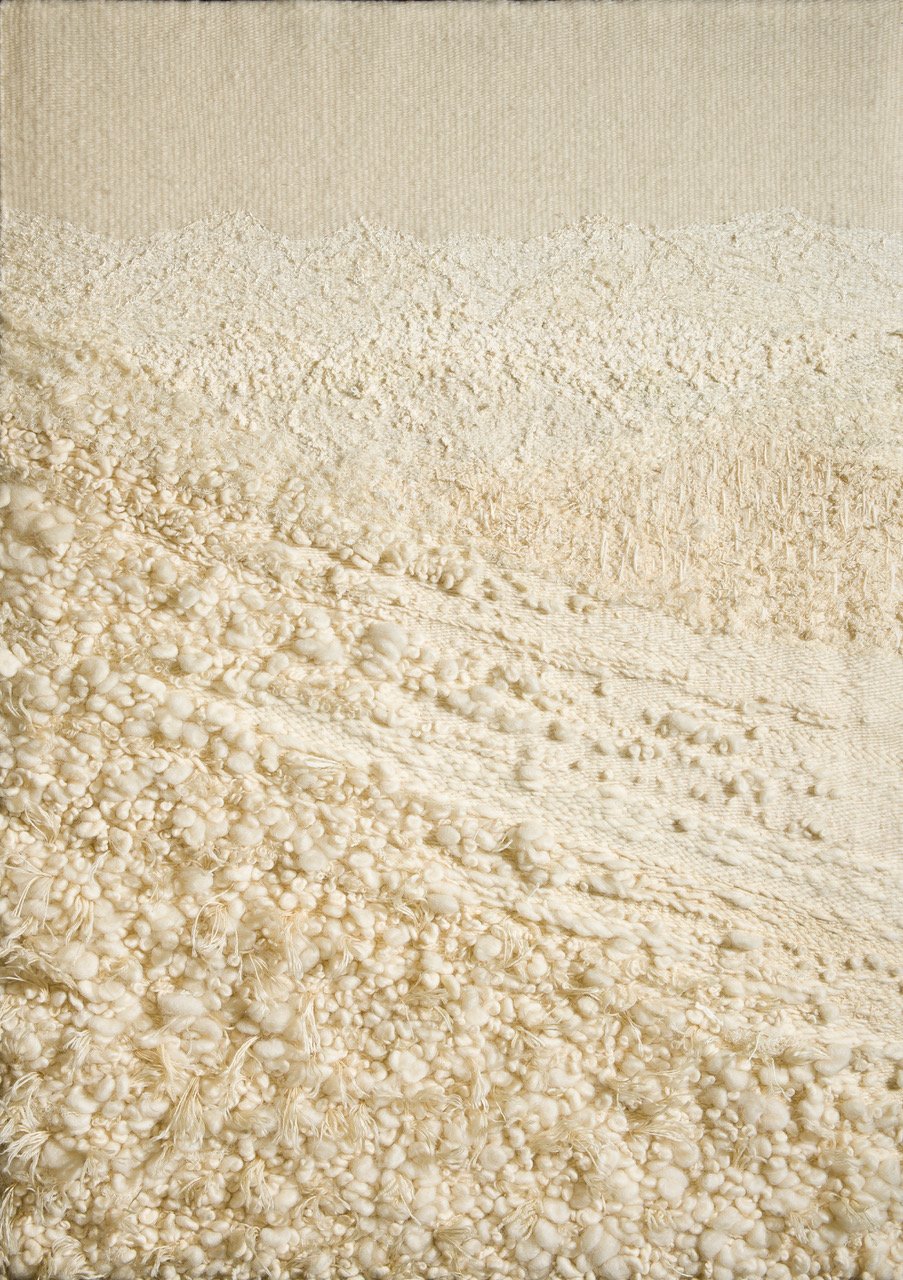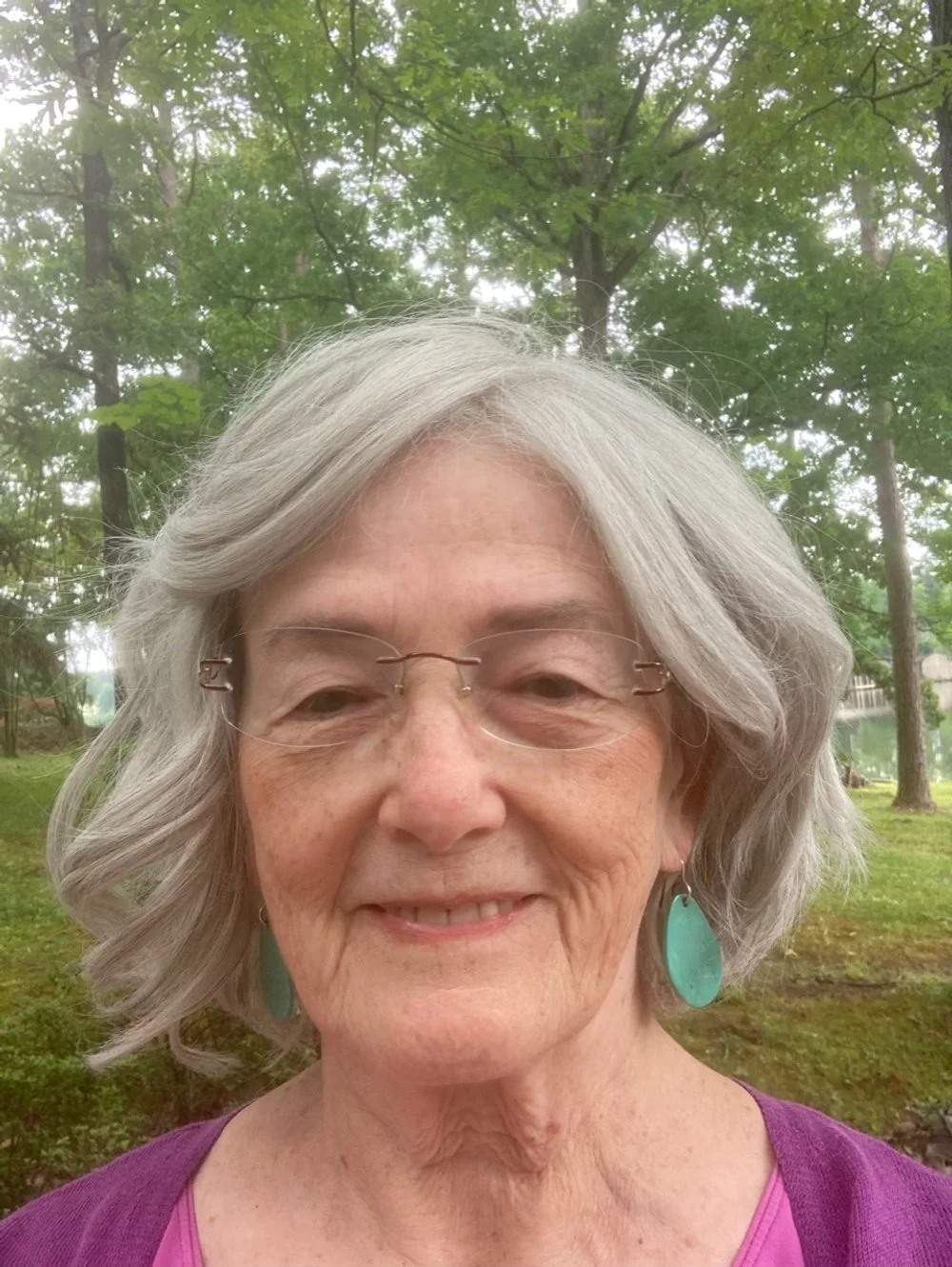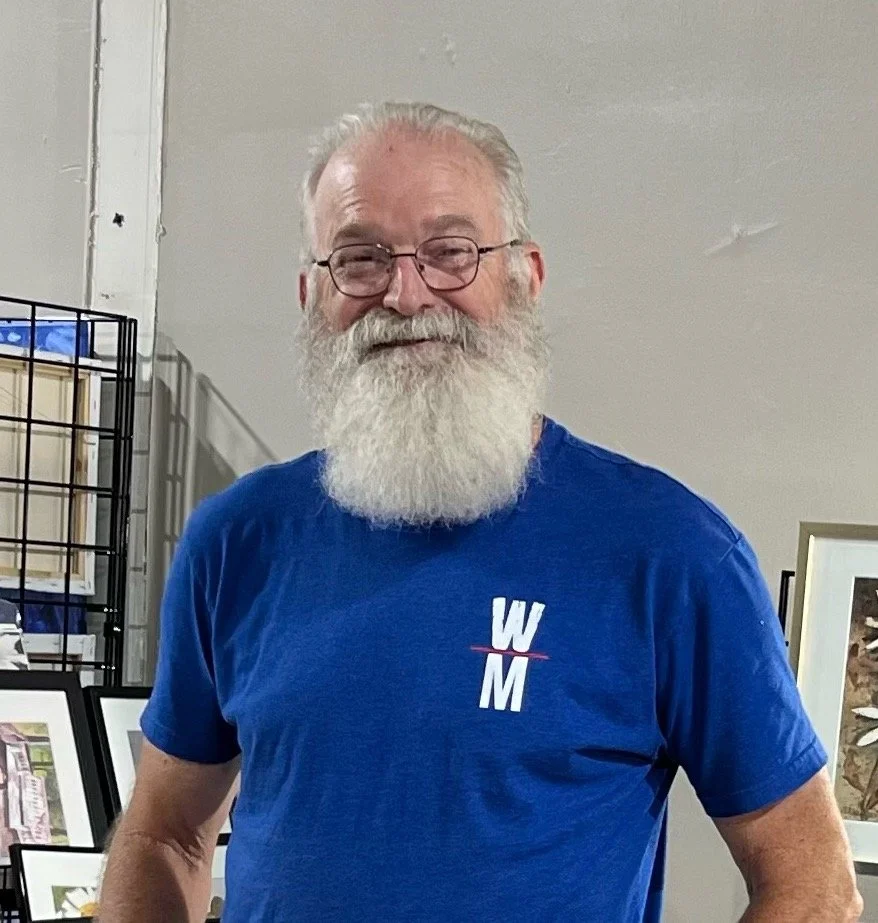Interview with artist Barbara Cade
Barbara Cade is a fiber artist living and working in Hot Springs. Her extraordinary tapestries and sculptural pieces are born from all natural materials. For Barbara, weaving on primitive looms, cardweaving, coiling and felting pay reverence to ancient traditional techniques. Her work has been exhibited widely and is in corporate collection around the US. More of Barbara’s work can be found at her website barbaracade.com.
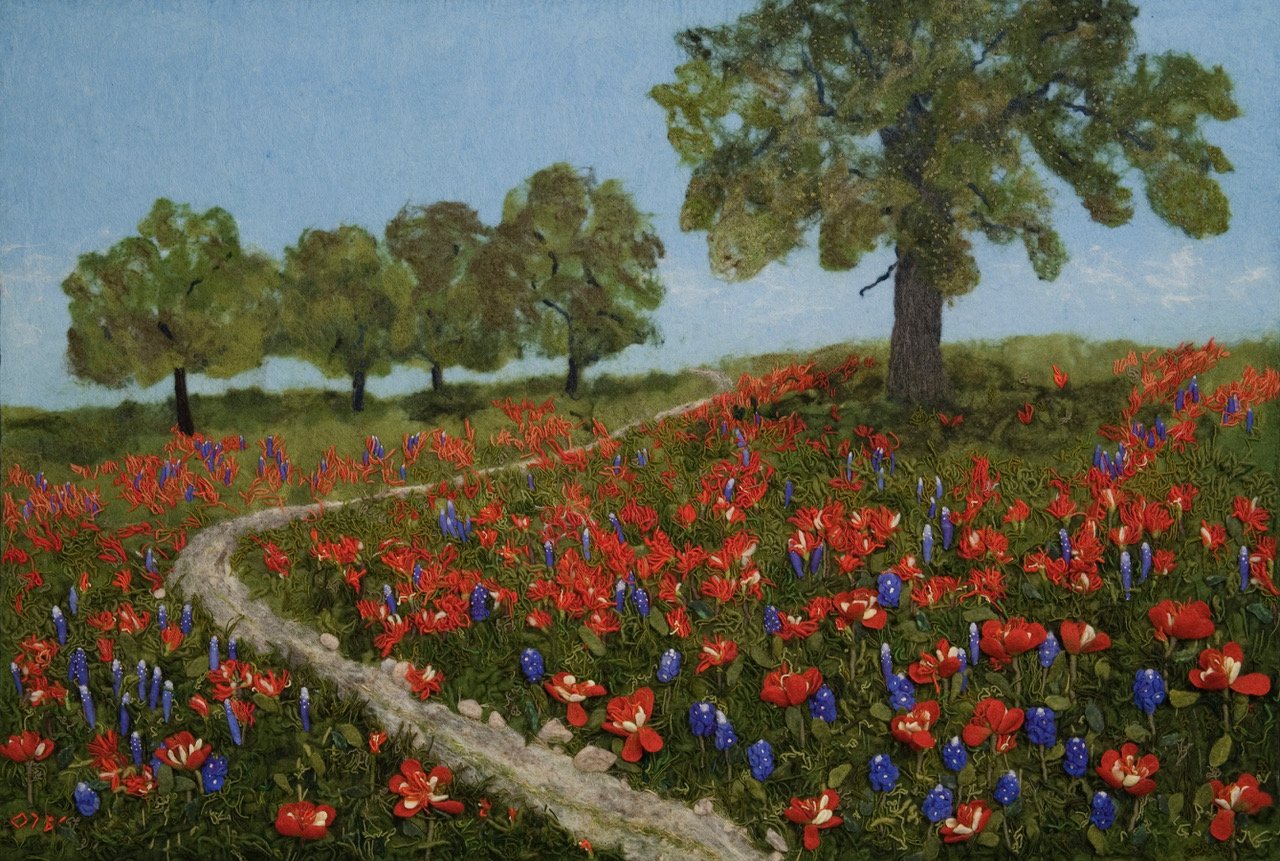
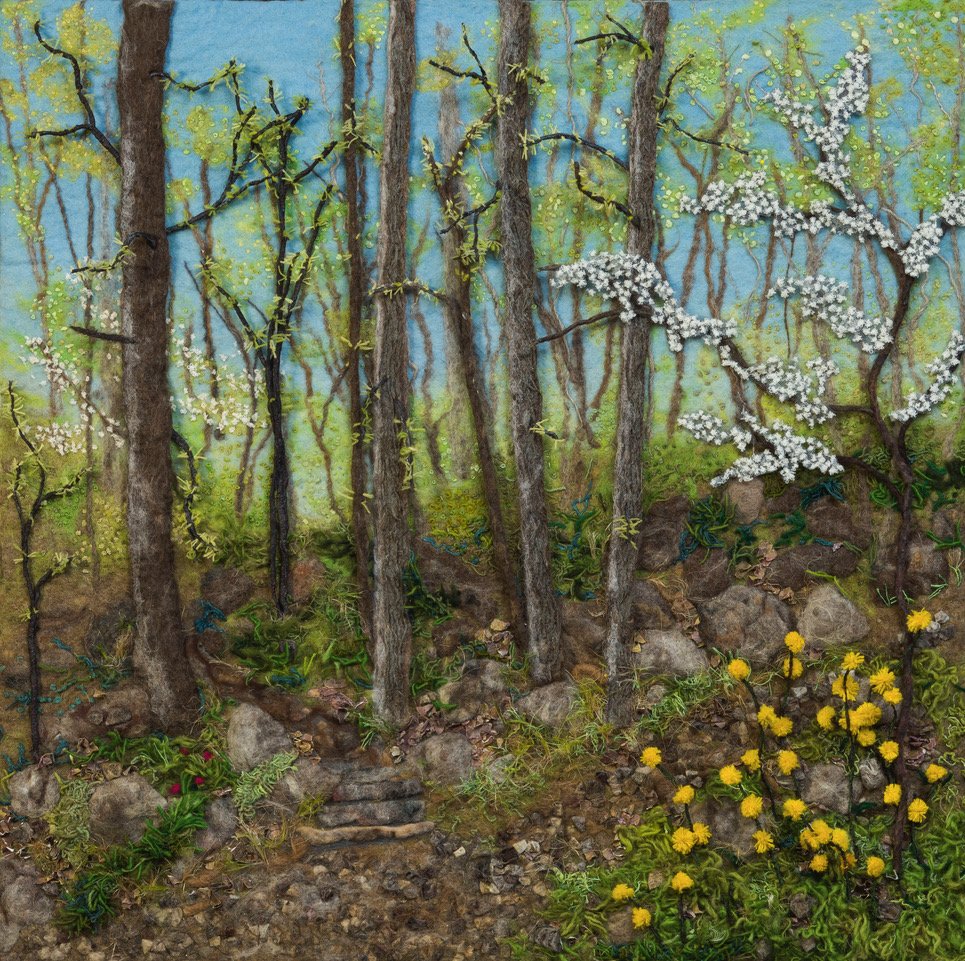
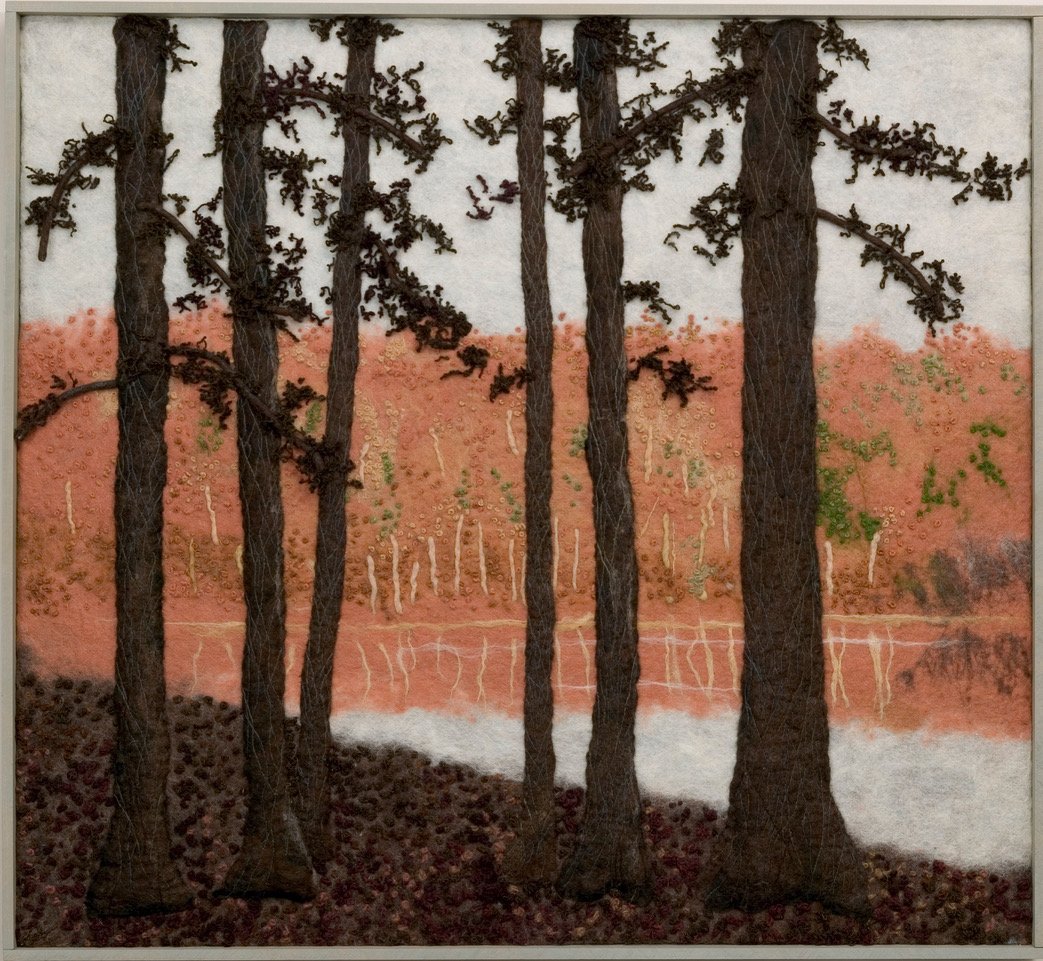
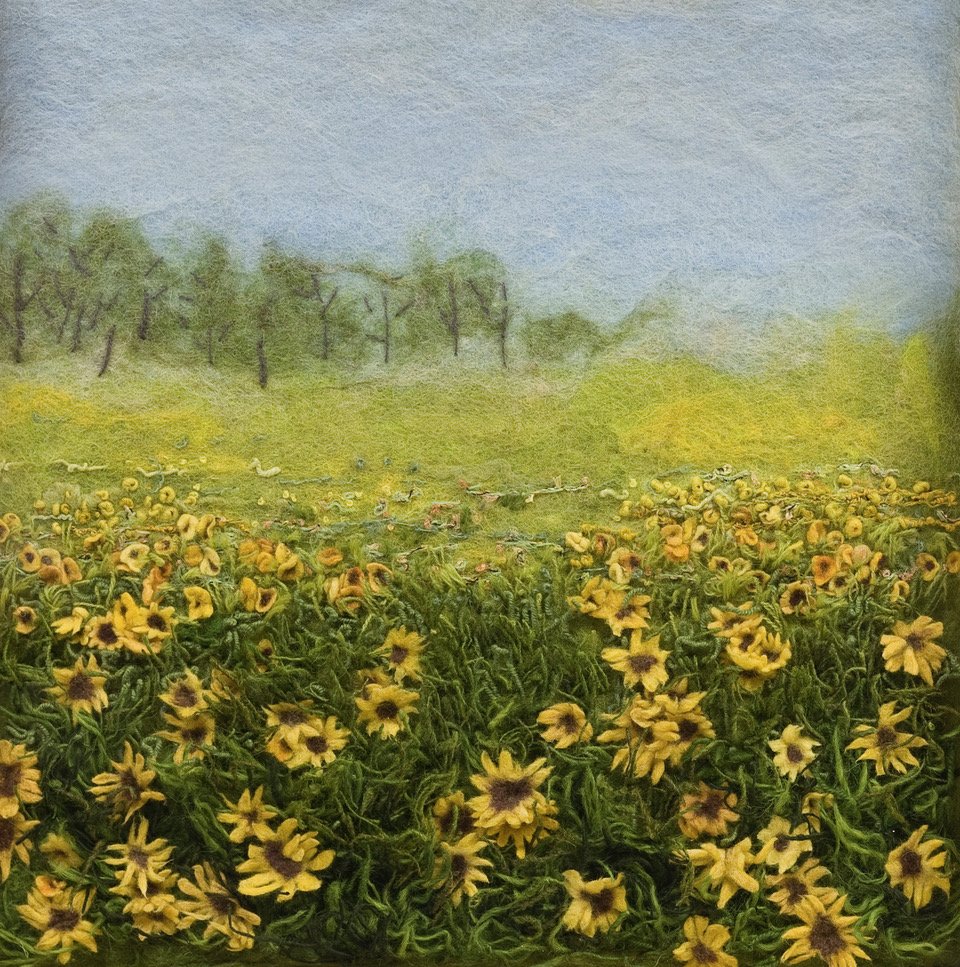

AAS: Barbara, where did you grow up and was marking art and being creative something encouraged by your family?
BC: I was born in Illinois, moved to California where I lived 3rd through 8th grade. Art was not part of my childhood. I knew no famous artists nor did I know anyone who made or painted anything. At home, I had watercolor paint and crayons, but didn’t like coloring books. I built houses out of shoeboxes and Lincoln logs for my little plastic dolls. I didn’t have much doll furniture, so I used a set of small colored blocks for the fridge, the bed, the sofa, etc. Like most moms, mine sewed. There were lots of fabric scraps around which I could have to make clothes for my plastic dolls. Beginning in 5th grade my mom showed me how to sew a gathered skirt. In school I remember in 4th grade making an “Indian” pot, in 7th grade, when we finished our work early, sometimes our teacher let us paint murals on brown paper--we always painted the same thing: purple mountains (with snow on top) and flowers. However, my Girl Scout troop was very active; I earned my Curved Bar (lots of badges). I remember train trips around the state, horseback riding lessons, camping outdoors, making Bunsen burners for cooking, ice skating, hand-sewing, embroidery, weaving lanyards, lots of other craft projects, and working with copper. We spent two Saturdays in 6th or 7th grade with a well-known woman artist: one Saturday I painted two blue jays with watercolor, the next weekend I painted an apple and an orange in oil. I remember the artist put some white paint on the fruit to give them volume, but I was annoyed that she didn’t let me do it myself. My last summer in California I was spent at a primitive Girl Scout camp, where we made a sun shower, lashed a large table together and made a concrete fire pit. These childhood experiences and play with all kinds of materials have supplied me with fuel for my artwork and have been crucial to designing and problem-solving.
AAS: How did you end up in Hot Springs?
BC: I graduated from the University of Illinois, Urbana with a B.A. in German, and M.A in German at the University of Washington in Seattle. I married after my B.A. and we moved to Georgia during which time my husband was drafted. He signed up for officer’s school and we went to Germany for three years. During that time, I took watercolor classes at the Volksschule, created some copper-enameled plates with a retired goldsmith who worked in the army recreation center, and spent time at the post library reading all the architecture books. I loved Frank Lloyd Wright’s houses and memorized his book “The Natural House”. Modigliani was my favorite artist. After that time in Germany, we both went to grad school in Seattle. We lived in the Pacific Northwest 11 years. My husband’s job brought us here.
AAS: Where did you learn to weave and work with textiles?
BC: I was sewing at an early age. One memory I have from California is my mom returning from buying two wool suits on sale at some fancy store in LA. She showed me the INSIDE of the garments to highlight the beauty of the construction. I had sewing in Home Economics in 7th and 8th grades, so by the end of 8th grade, I was very familiar with the sewing machine, and had worked with a variety of fabrics and materials. I do not remember who showed me how to knit, but my grandmother taught me to crochet when I was in high school. I sewed some dresses for myself in high school and designed some suits in college when I was a TA. I sewed most of my own clothes for years after I was married. I loved Coco Chanel’s clothes.
I finished my M.A. degree, but after graduation, I knew I wanted to make things. I taught myself copper foil stained glass, made candle sticks out of turned table legs, and in the fall, took a jewelry construction class for a year at the community college from the first artist I had ever met. A relative wrote at Christmas that she was taking a weaving class and wanted to make a pillow for us. When I mentioned this to my mom, she told me that her mom had had a loom in the barn where she wove rag rugs. She then went out and bought me a weaving book filled with pictures and photos of primitive looms from all over the world. I was hooked from the beginning. I made my first loom out of a grape box with nails at each end. My first weaving was 4” wide, 15”high and had small beach rocks woven in. I never wanted to weave fabrics. A few years later a friend showed me how to spin with a drop spindle, and much later I taught myself felting.
AAS: Your work is so unique and beautiful. I want to start off with Kalaloch Rocks. It is a very special piece and I love the way you used soft materials to image hard stone. Tell me about it.
Kalaloch Rocks, 28” x 40” x 7”, handmade felt, wool
BC: After leaving the West Coast, I had a hard adjustment here. In the short time I lived there, I had been juried into some fantastic shows, had a piece chosen for the permanent collection of the Tacoma Art Museum, loved the century modern house I had updated and missed my creative friends. Some of my early landscapes were scenes I remembered from that time. After several years we started spending vacations in the northwest. My husband hiked with friends, and I spent a week with my Purple art friends (Purple is the name we gave our art group.). We rented cabins every year at Kalaloch Lodge on the Pacific Coast. Every year I collected a sack full of rocks to take home. It’s one of my favorite places.
All the rocks are made with handmade wool felt through the process of wet-felting. I start with small handful of dry, grey fleece and roll it into a ball. I pinch it together and dip it into some warm water with a few drops of soap. I begin rolling it loosely between my hands. As it starts to felt together, I press my hands closer together. I gradually add more layers and continue the rolling and pressure. When the rock is close to the right size, I add one more layer and some white fleece pieces to make the design. Then I continue the rolling and pressure until the rock is hard felted. Each rock was attached by hand to a handwoven background and put on a wooden framework so it can be hung on a wall.
AAS: What is the history behind wet-felting?
BC: Wet-felting is the process used by ancient people who had access to wool to make fabrics. Felted fabrics dating to 6500 BC have been found in ice caves in Russia. To make felt, you need wool, water, heat, pressure and agitation. To begin making felt, the wool is sheared from the sheep, cleaned, carded (combed) and then dyed. It is then pulled out into smallish pieces to make the first layer in the desired shape. The next layers are laid out in the opposite direction. The number of layers depends on what is being made. For example, a scarf would be thinner than a rug. The entire piece is then wetted with warm water. At this point, for small pieces with designs, I use my hands to press on the wool until it turns to felt (pressure). For larger pieces, I roll up the felt in a bamboo window shade or bubble wrap and apply hand pressure while rolling it on a table to make it even denser. After it is rinsed and dried, it can be cut like any fabric. Scientifically, the fleece turns to felt because each hair is covered with scales. When warm water is added to the wool, the scales open up. When the pressure and agitation are applied, it causes the scales to hook on to each other, eventually producing a durable fabric that cannot be pulled apart. The more pressure and agitation, the harder the felt.
In 2004 I was awarded a scholarship from the Arkansas Committee of the National Museum for Women’s Art to go to Finland to study felt-making and meet artists. There are many artists here, but no other wet-felters in Arkansas that I know of. I have worked by myself all these years, and I think it has allowed me to develop in my own way, to think for myself. It was wonderful to see what other artists were doing in Finland. I met three felt artists making art, not clothing, and one lived in the Arctic Circle. She and her husband had a reindeer farm, and she had a felting studio and a huge sales gallery. They were a tourist attraction near a museum; busloads of people came to her gallery during the summer! Another artist lived on a farm. She had just been given a grant to add a massive hot water heater to her studio. She made very large, felted tapestries which depicted Finnish history. The third artist lived in Helsinki. She too made large pieces, but she printed her self-portraits onto the felt. I visited other artists making felt items in other ways, toured a factory (a mom-and-pop place) where they made felted boots for the snow, and visited a sheep farm. I also visited a craft school where I gave a workshop. I learned something every place I visited, but the most amazing thing was I never had to explain what felting was.
AAS: Tell me about Birds in Flight. It is such an imaginative and cleverly conceived piece. And the subdued palette really adds to its magical qualities.
Birds in Flight, 45” x 65” x 4, weaving with rya knots, handspun wool and silk
BC: The first two landscapes I designed in 1978 were Arkansas scenes; I used them to teach weaving at a residency in a senior center. They were exhibited at Fiberart ‘78 which I helped organize at the Hot Springs library. They created a lot of buzz. I never imagined that I could create something representational. Birds is the second weaving I did in the studio. It was inspired by the burned crop fields seen on the way to Memphis. I saw all that as a metaphor for my life at that point. The landscapes would not have happened, had I not learned to spin. A friend showed me how to spin with a drop spindle; a man whose name I have forgotten, asked me to co-teach a spinning and natural dye class, then he gave me one of the spinning wheels. Another friend’s husband made me a wool wheel on his homemade lathe. This enabled me to spin yarn of any size. Except for the sky, Birds is all handspun wool and silk.
AAS: The way you combine felting with weaving and crocheting produces some magical effects. But I especially love the way you often incorporate all types of fiber elements that are a perfect counterpoint to each other. Salsa is one of those terrific pieces. Tell me about it.
Salsa, 44” x 46” x 4”, handmade felt, wool, paper, linen, acrylic
BC: I find inspiration in the landscape wherever we hike. I took a photo of red leaves which fell onto the trail in the fall at Mt. Nebo State Park. The background is handmade felt, the roots are handspun linen coiled around felted wool, the leaves are handmade paper with acrylic paint. I am reminded every fall that the tree uses fallen leaves as food to grow. Leaves are as varied as rocks.
AAS: Do you first sketch out an image on paper then decide how to recreate it in fiber?
BC: With the landscapes, I usually start with a photo of something that grabbed my attention. I mostly sketch the technical issues: how to make the leaves, how to paint them, how to attach them…..and most important, how to hang it up.
AAS: You also do more sculptural pieces. Tell me about your Hair Hat series.
Hair Hat #5, 18’d x 44”h, crochet, coiling handspun goat hair, silk, horsehair
BC: BONFIRE is a collection of my artwork which expresses my growing concern for Earth, a concern that started burning in 1971 when I started my first body of work, SEARCH FOR IDENTITY—THE AGE OF INNOCENCE. I was living on the West Coast then when people were protesting clear-cutting and the loss of the spotted owl habitat. The last sculptures of SEARCH were Hair Hats; they were made with horsehair or goat hair (very scratchy) and designed to be worn as punishment by those not honoring Nature.
The new Hair Hats made since 2015 document specific environmental disasters and accidents. Each hat is accompanied by a record of who, where, what, when, how –and any punishment. In addition to the scratchy yarns I used, I added things like fish hooks, lead droplets, oil droplets and hard plastic trash to the inside of the hats. It angered me that no one ever went to jail. Corporations just paid some fines and continued on with business. If we do not make people and corporations responsible for sloppy designs, shoddy workmanship, we cannot expect our environment to change.
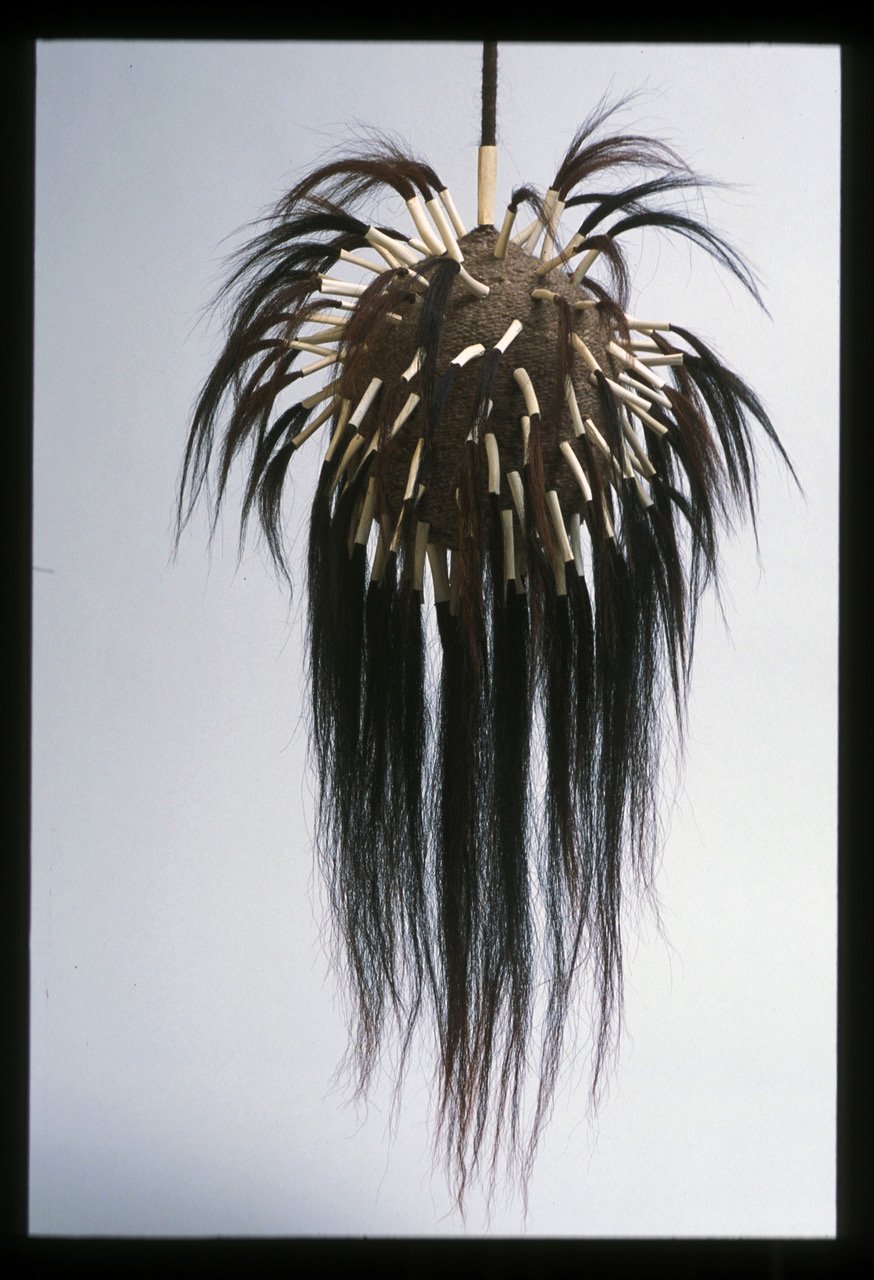
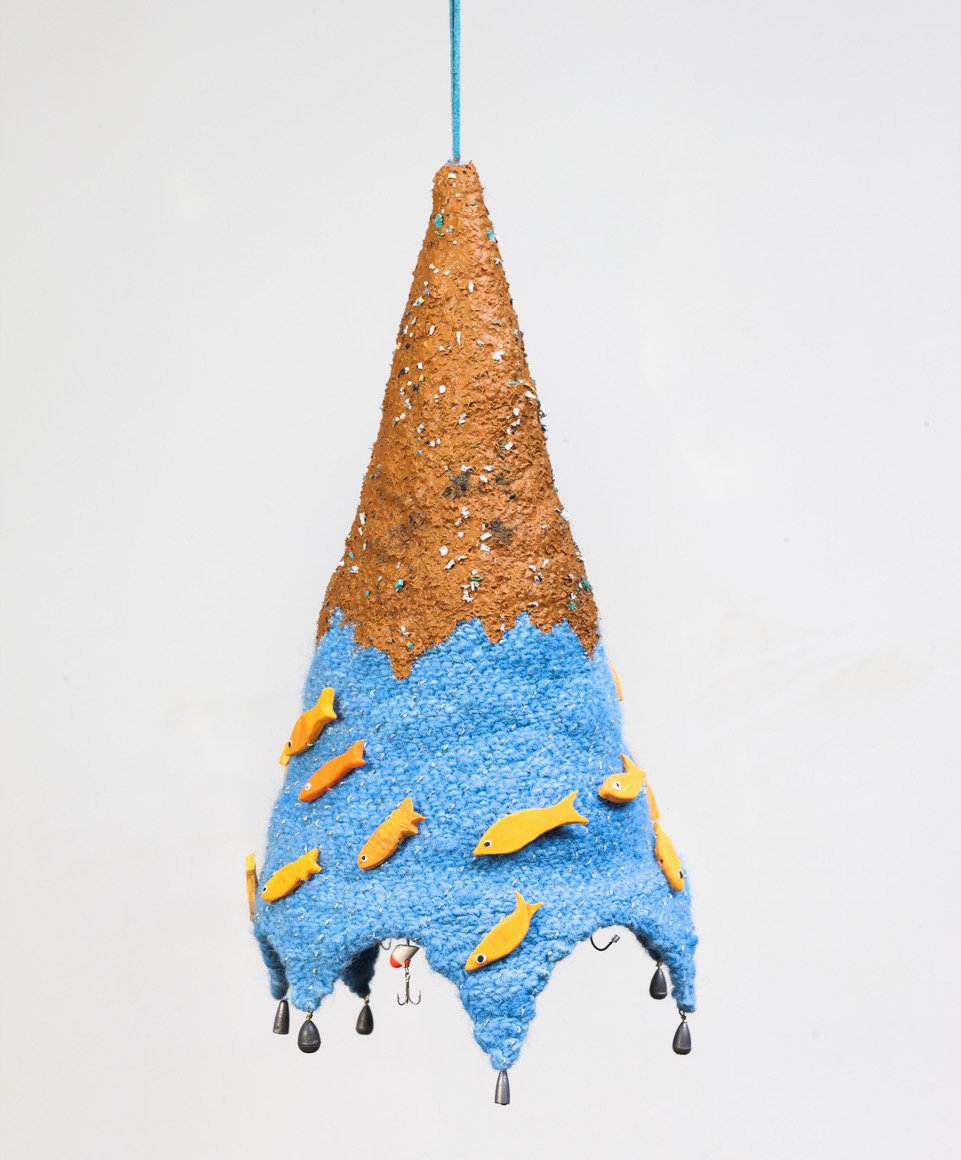
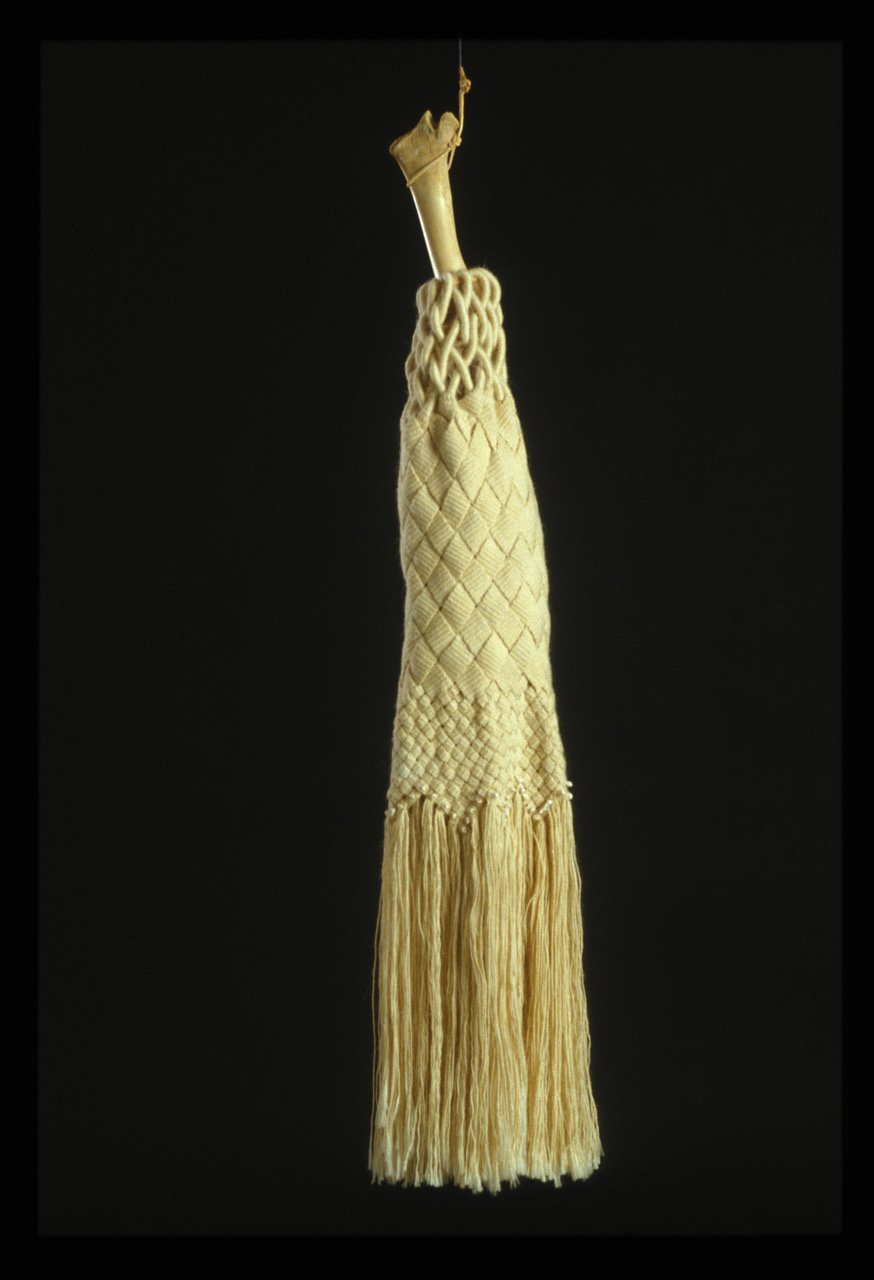
AAS: Your work is about nature and the environments we live in – the beauty and the corruption. What is the story behind Grandfather’s Farm: Bumper Crop?
Grandfather’s Farm: Bumper Crop, 34” x 36” x 4”, handmade felt, wool, found objects, aluminum, wire, wood
BC: My grandparents lived on a farm in southern Indiana. The original house was a one-room log cabin that was eventually moved up the hill so that the house could be made larger. It was simple living, pumps for water and an outhouse. I spent time each summer there, wading in the creek at the bottom of the hill and exploring in the dark scary woods. The barn was especially intriguing. It was this vast space—to this day, I like high ceilings and empty spaces. It had a stone foundation because it was built overhanging a hillside at one end, so the animals could eat in a dry place. There was a hole in the main floor so that the hay and feed could be thrown into the manger below. I just loved that.
One day, months after my grandmother died, I got a call from a lawyer telling me that my siblings and I had inherited the farm. None of us lived in the area, so we agreed to sell. Later I heard from cousins that the barn had been torn down, there was a mobile home park in the next field, and the farmland had been sold for a housing development. Farm is about the loss of the family farms in the U.S., the loss of green spaces, the loss of a life style, the loss of simplicity.
AAS: Why do you think you developed a love of working with fiber?
BC: As you can see, I have been involved with fiber all my life. It always seemed like something to play with when I was young. I never thought of it as a career, it was just something I did, something I played with. I am still playing today. Wool is my primary medium. It is a renewable resource, durable, versatile, can be manipulated in so many ways. Felt can be seamless so it is ideally suited for sculpture.
Many years ago, I learned that Home Economics was not taught in Arkansas schools. Something hit me that day: sewing a dress is like making a sculpture. It is three-dimensional, utilizes math, measuring, physics. If you can sew clothes, you can probably build just about anything.
Early on, I had been thinking of my German studies as a career choice. I had decided to study German when I was in high school. Originally, I wanted to translate at the United Nations. When I found out that was not possible, I wanted to broadcast for Radio Free Europe. I never wanted to teach. But I never once thought of fiber as a career. It was just a fun activity I knew how to do. How do you describe a passion for something? I just know that after I got the weaving book from my mom, I knew that’s what I wanted to do - to make things. I finally realize that art and German have one thing in common: communication. Art is just a different language. An interesting side note, I found out a few years ago that my great, great grandfather in Germany was a weaver and a tailor!
